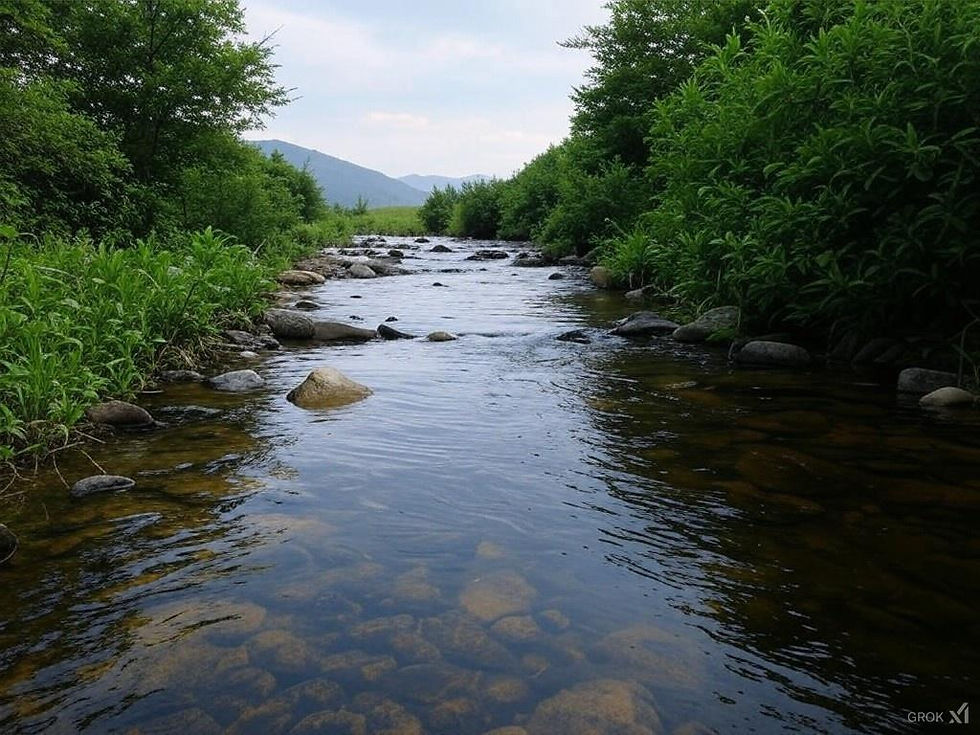"Tenkara Lines & Line Lengths: Techniques for Precision Casting"
- Sumato

- Jan 11
- 3 min read
Tenkara, the traditional Japanese method of fly fishing, relies heavily on the simplicity of its gear — a fixed line, a rod, and a fly. Among these, the line is crucial for achieving precision in casting. Here, we'll delve into how different line types and lengths can help you master your casting technique.
Understanding Tenkara Lines
1. Furled Lines:
Characteristics: Furled lines are twisted or braided, often from nylon or silk, providing a softer, more traditional feel. They taper from thick to thin, which can help in energy transfer from the rod to the fly, making casting smoother.
Casting: These lines are excellent for beginners due to their forgiving nature. They also offer a good turnover for the fly, which is beneficial in windy conditions.
2. Level Lines:
Characteristics: Made from a single diameter of material, typically fluorocarbon or nylon, level lines are simple, lightweight, and versatile.
Casting: They require a bit more skill to cast accurately due to their uniform diameter, but they are excellent for precision casting in tight spots or when you need to adjust your line length frequently.
3. Tapered PVC Lines:
Characteristics: These lines start thick and get progressively thinner, much like western fly fishing tapers. They can be made from PVC or other synthetic materials.
Casting: The taper aids in energy transfer they feel similar to casting a furled line but often have memory.
Line Lengths: Adapting Line Length to Your Fishing Situation
Typical Recommendation: A common starting point for many tenkara anglers is to use a line that's approximately the same length as the rod. This 1:1 ratio makes for an easier learning curve and is often ideal for general fishing conditions, providing a balanced feel and control.
Long Lines for Still Water: When fishing still waters such as lakes, using a longer line can give you the reach needed to present your fly. Sometimes up to double the length of the rod can be used. When adding addtional length it does add addtional challenge to landing the fish. Youll likely need to use handlining and net.
Tailoring Level Lines to Specific Spots:
Small Streams or Holes: Here, precision is key. A level line can be cut to the exact length needed for the size of the hole or the underbrush around the stream. This customization also allows for making longer your line tailored to a hole if attempting to nymph with a tenkara rod.
Adjusting for Wind: In windy conditions, a shorter, level line might be easier to control, whereas a furled line's added weight can help cut through the wind better.
River Dynamics: In rivers, where currents vary, you might switch between line lengths. A shorter line can manage faster currents, while a longer one can reach fish in slower, deeper pools.
Tips for Precision Casting
Practice Your Technique: No matter the line, casting finesse comes from practice. Work on your wrist movement to achieve the right line speed and fly presentation.
Line Management: Keep your line free from tangles by ensuring it's properly coiled when not in use. Check out our Sumato tenkara line holders.
Experiment: Don't be afraid to switch lines or lengths mid-fishing session. Conditions and fish behavior can change, and so should your approach.
In conclusion, mastering tenkara is not just about knowing how to cast but also about understanding how to adapt your equipment to the environment. With the right line length and type, you can enhance your casting precision, making each day on the water more rewarding. Whether you're fishing in a serene mountain stream or a bustling river, remember, the art of tenkara lies in simplicity and adaptation. Starting with a line length equal to your rod is a good rule of thumb, but don't hesitate to adjust as needed to meet the day's challenges.
line length customization


Comments